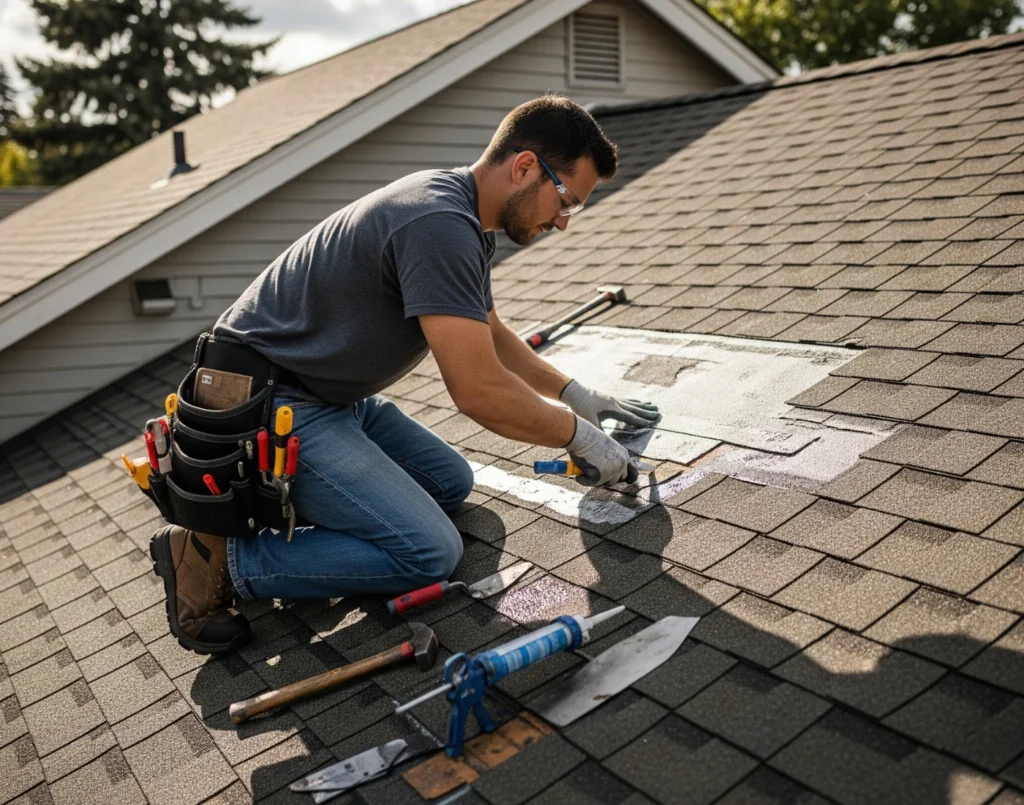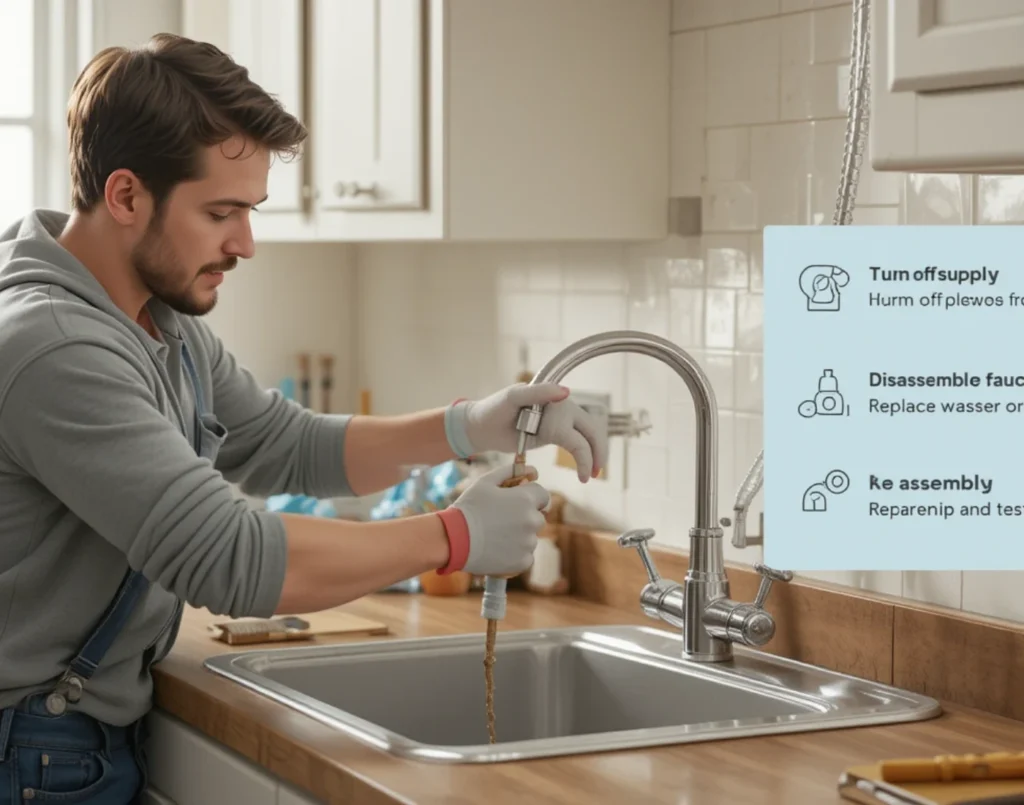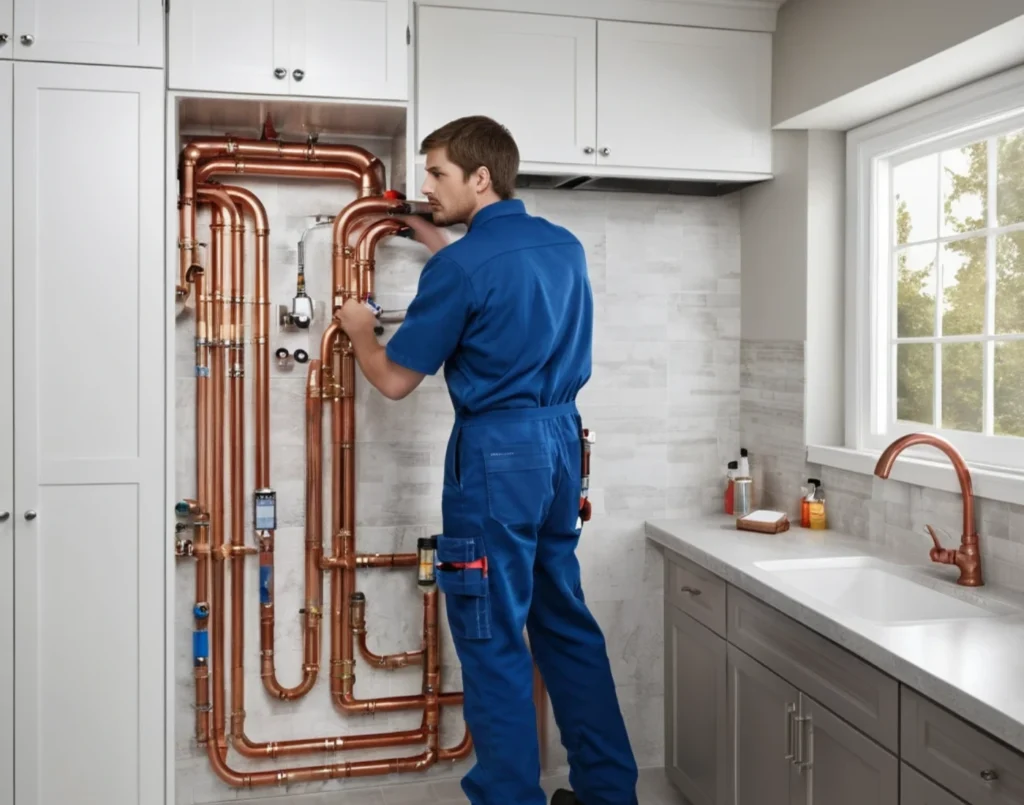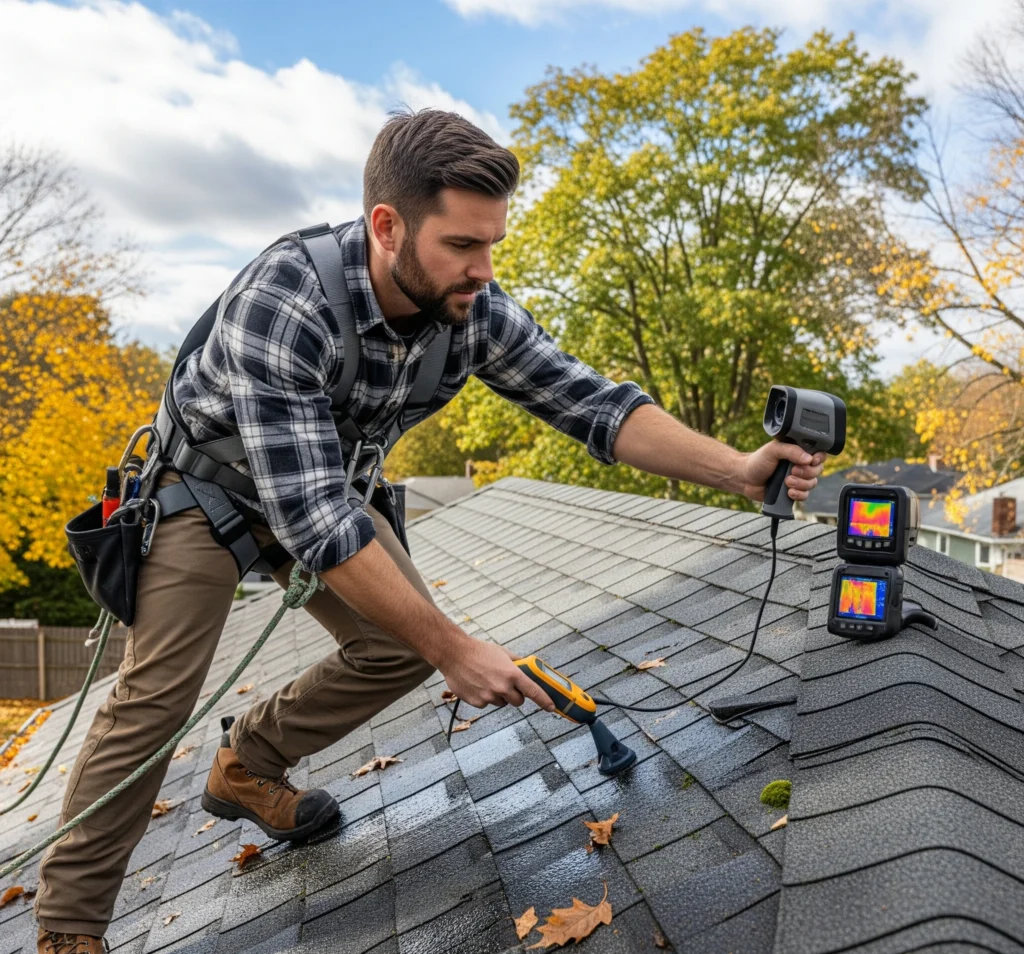Water leaks in the roof need immediate attention to prevent further damage. First, find where the leak is, both inside and outside your home. Then, use temporary fixes like tarps or roofing cement. For long-term solutions, consult professionals for repairs like flashing replacement or shingle restoration. Regular maintenance, like cleaning gutters and doing routine inspections, helps lower the chance of future leaks. It also extends your roof’s life span.
A water leak in the roof is a frustrating and potentially costly problem for any homeowner. A small leak can cause big issues if left on its own. It can result in structural damage, mold growth, and high-priced maintenance. But the good news? Acting quickly and using preventive steps can save money and protect your home.
This guide shows you how to handle roof leaks. You’ll learn to find the source, apply temporary fixes, and explore long-term solutions. We’ll also include maintenance tips to prevent leaks in the future. This manual facilitates both water stains and severe water damage.
How to Inspect the Roof for Damage
Identify Exterior Damage
Check your roof for damage. Search for lacking or curled shingles, cracked tiles, or rusted flashing. Additionally, look for any loose places or worn or discolored areas. Scan for prone spots like roof valleys, vents, chimneys, and skylights. These spots often leak. Check for moss, algae, or debris buildup that may be trapping moisture and causing additional damage. Annual inspections can detect problems early and save a lot of money on repairs.
Pro Tip:
- Use binoculars or a drone for a detailed view of hard-to-reach areas.
- Check for sagging areas in the roof, as these often indicate structural issues.
Check Interior Signs of Leaks
Inside your home, look for water stains on the ceilings or walls. Areas right under the attic often show signs of water leaks. Check the attic for damp insulation, mold, or bulging drywall. These signs usually mean there’s a leak in the roof.
Steps:
- Search for dark or discolored spots on ceilings.
- Use a flashlight in the attic to spot water trails or pooled water.

What are temporary fixes for roof leaks?
Apply a Tarp Over the Affected Area
Zip Tarp: A tarp works as an instant solution for leaking roofs. The tarp will need a clean, dry surface to stick to the damaged area. Apply it over the damage, using a few inches of overlap for full coverage. Fasten down with roofing nails, C-clamps, or weights to protect against environmental elements. This temporary remedy keeps further damage from occurring until repairs can be made.
Quick Tips:
- Ensure the tarp extends 3-4 feet beyond the leak for optimal coverage.
- Avoid climbing on a wet or slippery roof; use a safety harness during repairs.
Use Roofing Cement for Quick Fixes
Roofing cement is ideal for filling small cracks or gaps in your roof. It creates a permanent, water-repellent barrier to damage. Step 1: Remove Dirt and Debris. The first step is to ease the region. After it dries, you can fill the cracks or holes with the help of a trowel or a putty knife. Spread it and press it down strongly. Allow it to cure as per the instructions for a permanent fix.
Needed Tools:
- Roofing cement or sealant is key for sealing cracks or leaks in roofs. It helps create a watertight finish.
- A putty knife helps apply sealant smoothly. It makes it easier to fill gaps and crevices.
Long-Term Solutions
Consult Professional Repair Services
Calling a professional roof repairer is pleasant if the harm is serious. They can identify unseen problems such as water damage, weak structures, or a bad seal. Your repairs, finished by professionals, are safe, lowering the possibility of future problems. This becomes even more essential for structural repair, flashing change, or when it remains out of reach. Hiring professionals can save time and money by avoiding larger problems.
Why hire a professional?
- They use high-quality roofing materials designed for durability.
- Professional inspection often uncovers issues like faulty roof ventilation or worn pipe boots.
Address Faulty Flashing and Pipe Boot Leaks
Flashing and pipe boots are common causes of roof leaks and need regular checks. Replace or reseal damaged flashing around vents, chimneys, or skylights. This damage can let water in. Pipe boots that seal roof pipes can wear out. They need fixing or replacing to keep your roof watertight. These simple steps can prevent costly repairs.
Replace Deteriorated Roofing Materials
And if shingles, tiles, or panels atop your roof simply can’t be fixed, you need to replace them to keep your home safe. Ignoring the damage can lead to leaks, lost energy, and other structural problems. Cheap. The asphalt shingles have become a trend. Fear of it being “Dead” makes way for metal roofing to be very “Alive”: Durable, environmentally friendly, and often sourced from a percentage of recycled metal. The proper choice keeps your roof robust for years.
Pro Tip:
- Choose materials compatible with your existing roofing system to ensure a watertight seal.

Maintenance for Prevention
Clean and Clear Gutters Regularly
Clogged gutters can cause roof leaks and water damage. Overflowing water can also damage your siding, foundation, and landscaping. To avoid costly repairs, clean your gutters twice yearly, in spring and fall. This prevents blockages, keeps rainwater flowing, and protects your home. Regular maintenance keeps your gutters working and your home safe.
Steps:
- Use a sturdy ladder and a gutter scoop to dispose of particles.
- Install gutter guards for easier maintenance.
Conduct Routine Roof Inspections
Routine inspections help keep your property in good shape. They catch small issues early, before they turn into expensive repairs. Inspect twice a year, in spring and fall, to handle seasonal wear and tear. Check for damage early after severe weather, like storms or heavy snow. Staying proactive keeps your property in top condition year-round.
Checklist:
- Check flashing, vents, and roof shingles for wear or damage.
- Inspect valleys, which are prone to collecting debris and water.
Understanding Repair Costs
DIY vs. Professional Services
A minor leak saves you the maintenance fees you can manage yourself. All you need are the right tools; you can easily fix them with sealants, wrenches, and patch kits. They save money, and they teach fundamentals. For larger problems, like water damage and gnarly plumbing, it’s smart to bring in the pros. They know how to prevent problems from happening again. It’s a time- and cost-saver in the end.
Estimated Costs:
- DIY fixes (tools and materials): $50–$100
- Professional repairs (minor): $300–$600
- Major repairs or replacements: $1,000–$10,000+
Budgeting for Repairs
Set up a home repair fund for your roofing costs that were never planned for. This also applies to leaks or storm damage. Stashing money consistently guarantees you’re prepared for repairs without heaping on worry. It can, therefore, be inferred that regular maintenance increases the roof’s lifespan. Service gutters and inspect shingles regularly. It also spares you from pricey upkeep down the street.
Final Thoughts
All too much for sanity, a leaking roof. You can prevent additional expenses and frustration by taking preventive measures quickly. Prevention allows you to maintain your property dry and to experience safety. You can also use a temporary solution or set up a repair appointment.
Start with small jobs, cleaning gutters, and inspecting roofs. Then, fix problems quickly. Invest in your property and keep that roof up and running indefinitely!
Frequently Asked Questions
How often should I inspect my roof?
Look at your roof twice a year, once in the spring and once in the fall. Also, check it after severe weather events to catch and fix any damage early.
What is the first-rate way to prevent roof leaks?
Regular maintenance is key to preventing leaks. This includes cleaning gutters, trimming branches, and fixing minor damage quickly.
Can cleaning your roof extend its lifespan?
Regular cleaning gets rid of moss, algae, and debris. These can trap moisture and lead to harm. By cleaning your roof, you help it last longer.
Which roof sealant is best for extreme weather?
Silicone roof sealants are very strong. They work well in extreme weather because they are flexible and resist UV rays.
Why is attic insulation important for roof health?
Good attic insulation stops heat damage. It also cuts down on ice dams and keeps a steady temperature. This saves your roof from wear and tear.






